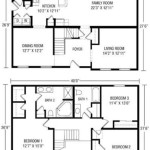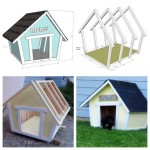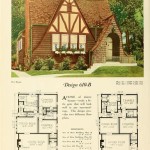Plans To Build A Tiny House: Comprehensive Guidelines for Indiana
The tiny house movement has gained significant traction in recent years, appealing to individuals and families seeking simplified living, financial freedom, and a smaller environmental footprint. Indiana, with its diverse landscapes and varying regulatory environments, presents unique considerations for prospective tiny house builders. Navigating the planning, design, and construction phases necessitates a comprehensive understanding of local codes, zoning regulations, and sustainable building practices.
This article provides comprehensive guidelines for individuals planning to build a tiny house in Indiana. It covers essential topics ranging from preliminary research and planning, understanding Indiana's building codes and zoning laws, to selecting appropriate construction methods and materials. It is imperative for anyone considering building a tiny house in Indiana to perform thorough research and seek professional guidance when necessary. The information provided herein should not be considered as legal advice; consult with relevant authorities and professionals for specific guidance related to your project.
Understanding Indiana's Building Codes and Zoning Regulations
Navigating the legal and regulatory landscape is a crucial first step in the tiny house building process. Indiana has statewide building codes that apply to residential structures, including tiny houses. These codes are primarily based on the International Residential Code (IRC) as adopted and modified by the Indiana Building Code. However, specific enforcement and interpretations can vary depending on the local jurisdiction, namely the city or county in which the tiny house will be located.
Zoning regulations are established at the local level, and they dictate how land can be used. These regulations can affect the size, location, and occupancy of a tiny house. Key considerations include minimum lot size requirements, setbacks from property lines, minimum square footage requirements for dwellings, and whether Accessory Dwelling Units (ADUs) are permitted. Many jurisdictions have not specifically addressed tiny houses in their zoning ordinances, leading to ambiguity and potential challenges.
Prospective builders should contact the local planning and zoning department in the jurisdiction where they plan to build. It is essential to inquire about the specific zoning regulations that apply to tiny houses, as well as any permits that are required. Be prepared to provide detailed plans and specifications for the proposed tiny house.
In some cases, variances may be required from the zoning regulations. A variance is a deviation from the standard rules, granted by the local zoning board. Obtaining a variance can be a complex process that requires presenting a compelling case demonstrating why the variance is necessary and how granting it would not negatively impact the surrounding neighborhood.
One important distinction to consider is whether the tiny house is intended to be on a permanent foundation or on wheels. Tiny houses on wheels (THOWs) are often classified as recreational vehicles (RVs), which are subject to different regulations than permanent dwellings. While some jurisdictions are becoming more accepting of THOWs as permanent residences, others may limit their use to temporary occupancy or require them to be located in designated RV parks or campgrounds.
Regardless of the intended classification, it is vital to ensure that the tiny house meets all applicable safety standards, including those related to electrical, plumbing, and HVAC systems. These systems must be installed by licensed professionals and inspected by local building officials.
Developing Comprehensive Plans and Specifications
Detailed plans and specifications are essential for the successful construction of a tiny house. These documents serve as a roadmap for the building process, ensuring that the tiny house meets all applicable codes and regulations, and that it is constructed to the desired standards of quality and durability.
The plans should include detailed floor plans, elevations, and sections, showing the dimensions and layout of the tiny house. They should also specify the type and size of all materials to be used, as well as the location of all electrical, plumbing, and HVAC systems. A structural engineer should review the plans to ensure that the tiny house is structurally sound and can withstand the loads imposed by wind, snow, and seismic activity, if applicable.
Specifications should provide detailed instructions for the construction process, including the sequence of operations, the methods to be used, and the tolerances to be maintained. They should also specify the quality of workmanship required, and the procedures for inspecting and testing the completed work.
When developing plans for a tiny house, consider the unique challenges and opportunities presented by its small size. Efficient use of space is paramount, and the design should prioritize functionality and comfort. Consider incorporating multi-functional furniture, such as fold-down beds and tables, to maximize usable space. Ample storage is also essential, and should be integrated into the design wherever possible.
Natural light and ventilation are also important considerations. Large windows and skylights can help to make a tiny house feel larger and more open, while also providing natural light and fresh air. Proper ventilation is essential to prevent moisture buildup and maintain good indoor air quality.
The selection of materials is another crucial aspect of the planning process. Consider using sustainable and environmentally friendly materials, such as reclaimed wood, recycled metal, and natural insulation. These materials can help to reduce the environmental impact of the tiny house and create a healthier living environment.
The plans should also address accessibility considerations. While tiny houses are often associated with minimalism, it is important to consider the needs of individuals with disabilities or mobility limitations. Incorporating features such as wider doorways, ramps, and accessible bathrooms can make the tiny house more accommodating for a wider range of occupants.
Construction Methods and Materials for Indiana's Climate
Indiana's climate presents specific challenges for tiny house construction. The state experiences hot, humid summers and cold, snowy winters. Therefore, it is essential to choose construction methods and materials that can withstand these extreme conditions and provide adequate insulation and weather protection.
Proper insulation is critical for maintaining a comfortable indoor temperature and reducing energy consumption. Common insulation materials include fiberglass batts, mineral wool, spray foam, and rigid foam boards. Each material has its own advantages and disadvantages in terms of cost, R-value (a measure of thermal resistance), and ease of installation. Consider the climate zone in Indiana when selecting insulation, ensuring it meets or exceeds the recommended R-values for walls, roofs, and floors.
The choice of roofing material is also important for protecting the tiny house from the elements. Asphalt shingles are a common and relatively inexpensive option, but they are not the most durable or environmentally friendly. Metal roofing is a more durable and sustainable option, but it can be more expensive. Other roofing options include wood shingles, clay tiles, and composite materials.
Siding materials should be chosen for their durability and weather resistance. Wood siding is a traditional option, but it requires regular maintenance to prevent rot and insect damage. Vinyl siding is a more low-maintenance option, but it is not as aesthetically pleasing as wood. Other siding options include fiber cement, metal, and brick veneer.
For tiny houses on wheels, the frame is a crucial element of the structure. It should be strong and durable enough to withstand the stresses of transportation. Steel frames are a common choice for THOWs, as they are lightweight and strong. However, they are also more expensive than wood frames.
Consider using durable windows and doors that have a low U-factor (a measure of heat transfer) to minimize heat loss in the winter and heat gain in the summer. Double-pane or triple-pane windows with low-E coatings are a good choice for energy efficiency.
When selecting construction materials, prioritize those that are resistant to moisture, mold, and pests. Indiana's humid climate can create conditions that are conducive to mold growth, so it is important to use materials that will not support mold growth.
Finally, consider incorporating passive solar design principles into the tiny house. This involves orienting the house to take advantage of the sun's energy in the winter and minimize heat gain in the summer. Overhangs, shading devices, and strategically placed windows can help to regulate the indoor temperature and reduce the need for heating and cooling.
Thorough planning, adherence to local regulations, and careful selection of materials and construction methods are the keys to building a successful and sustainable tiny house in Indiana. Seek professional guidance when needed and approach the project with a commitment to quality and attention to detail.

12 X 20 Tiny Home Designs Floorplans Costs And More The Life

12 X 20 Tiny Home Designs Floorplans Costs And More The Life

10 X 20 Tiny Home Designs Floorplans Costs And Inspiration The Life

12 X 20 Tiny Home Designs Floorplans Costs And More The Life

Tiny House Giant Impact Lyles School Of Civil And Construction Engineering Purdue University

Tiny House Laws In Pennsylvania A Complete Guide

Tiny Home Regulations In Washington The Complete Guide

Tiny Houses Are Cropping Up Around The Country To Give Shelter Homeless Shots Health News Npr

Simple Small Cabin Plans Bettie

Tiny Home Regrets Is Downsizing Worth The Cost Money
Related Posts








